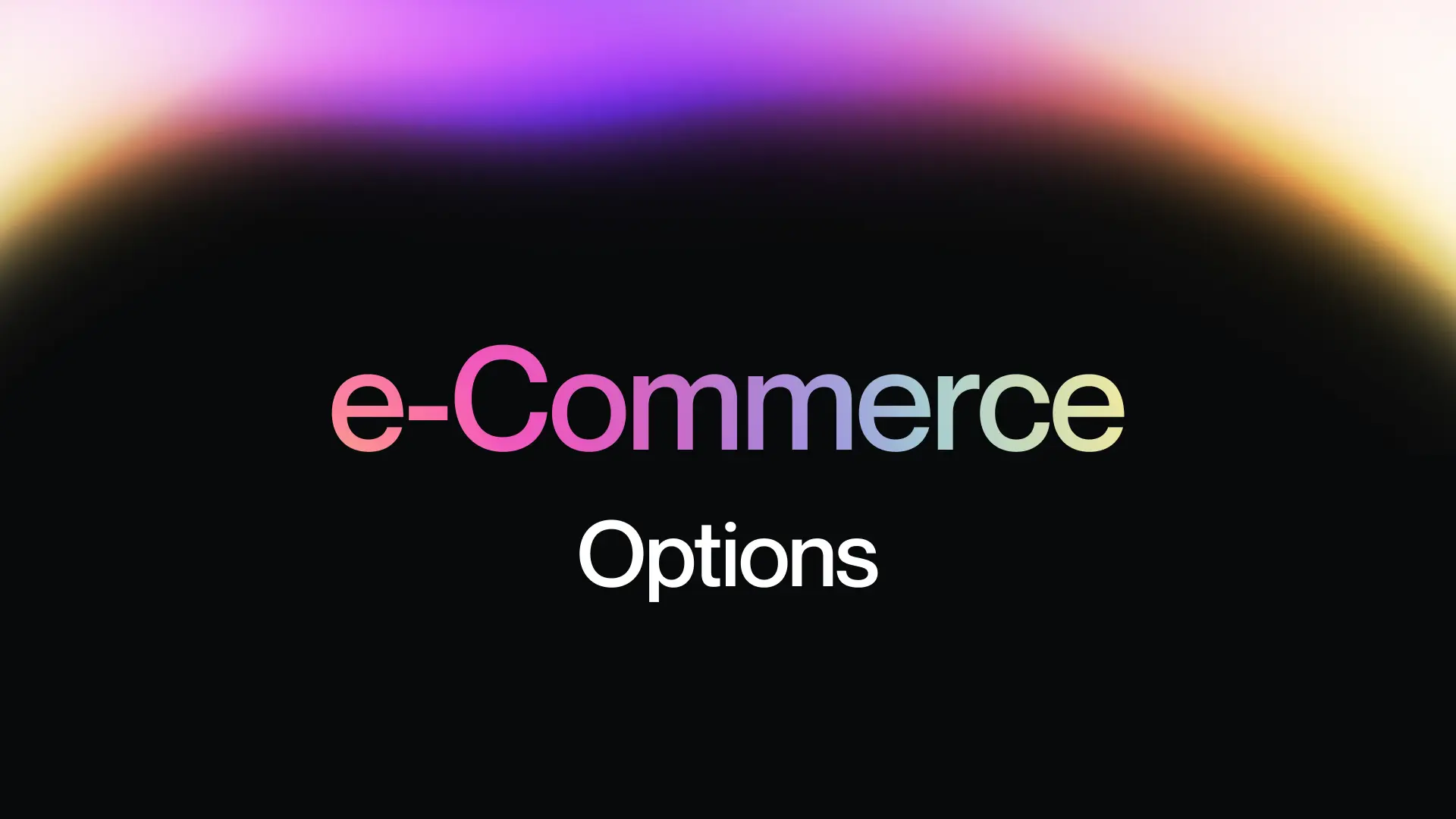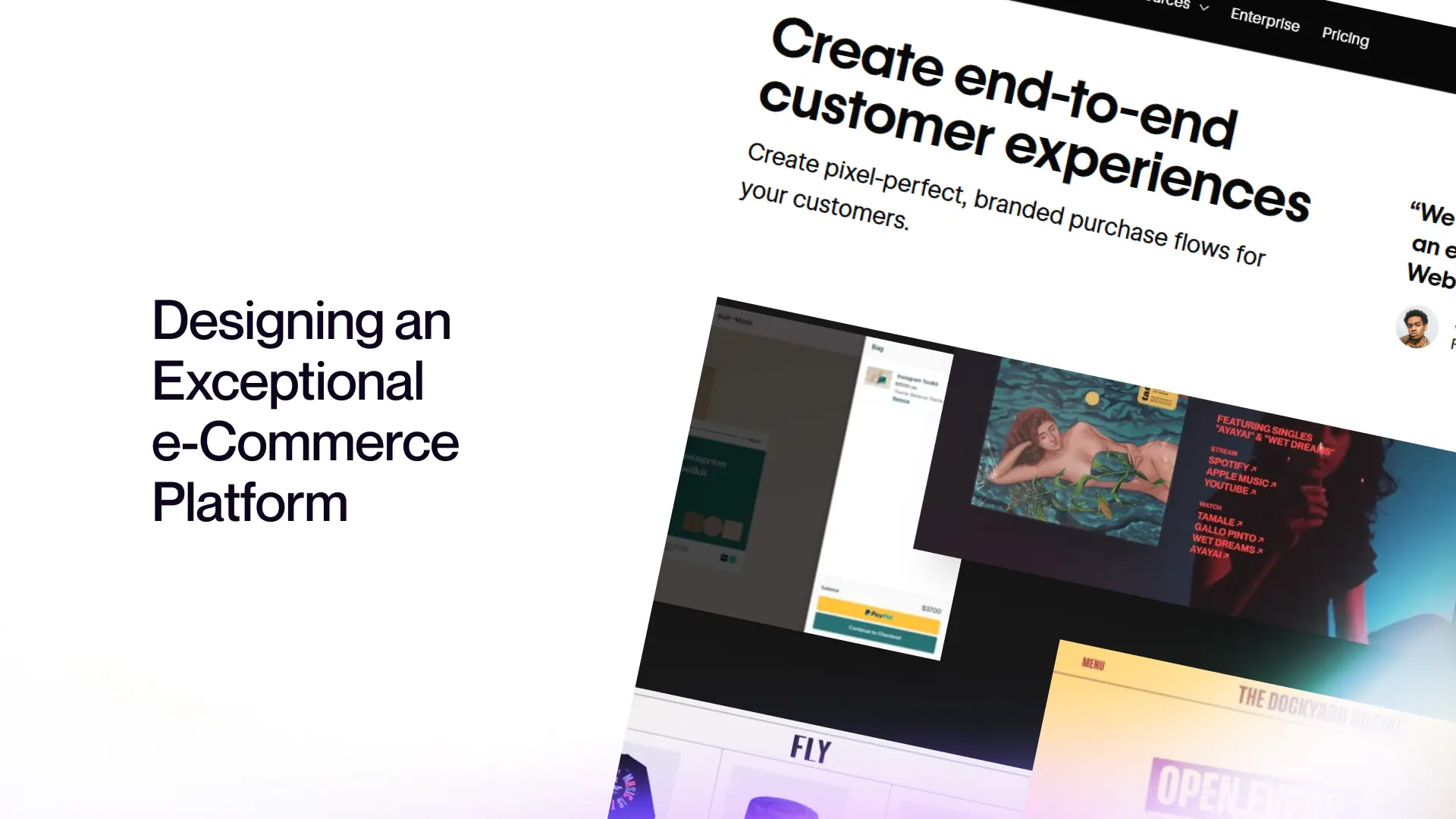Webflow has emerged as a favored choice among users seeking website development, thanks to its unique visual design and streamlined development process that sets it apart from traditional builders.
A quick glance at its pricing structure reveals a dedicated section specifically tailored to e-commerce.
Webflow excels in facilitating e-commerce endeavors by offering an extensive range of valuable features, making it a top choice for numerous e-commerce owners.
The platform's user-friendly drag-and-drop solution not only simplifies the creation of regular web pages but also ensures a seamless experience when crafting product and checkout pages, maintaining consistency throughout the entire website.
Webflow provides a suite of features designed to enhance the SEO performance of your online store, enabling you to boost visibility and attract more organic traffic.
A standout feature of Webflow is its robust content management system (CMS), an integral component of its e-commerce package.
This powerful CMS empowers you to efficiently design and create product page templates, simplifying the process of adding and effectively showcasing your products.
Given the evolving habits of customers, the e-commerce industry is experiencing rapid growth.
Webflow emerges as a valuable ally, capable of helping you develop an engaging and competitive online shop that stays up-to-date with the latest industry trends.
With Webflow's visual design prowess, streamlined development process, comprehensive e-commerce features, and SEO enhancements, you can confidently embark on creating an online store that captivates customers and positions your business for success in the dynamic e-commerce landscape.
Let’s dive in a little deeper now.
1. e-Commerce Options

When it comes to e-commerce functionality, Shopify, Wix, and WordPress are prominent choices among website builders. However, Webflow stands out with its robust and highly customizable e-commerce capabilities.
In comparison to Wix, Webflow provides a superior level of customization options for your e-commerce store. Wix, while popular, falls short in terms of flexibility and customization when compared to the extensive capabilities offered by Webflow.
WordPress users often turn to the WooCommerce plugin, which offers a wide range of e-commerce features, including various themes, store customization, ratings and review systems, and more.
However, relying on WooCommerce entails the use of an external plugin within the WordPress framework, introducing potential inconveniences and complexities in managing your e-commerce site.
Among these competitors, Shopify holds a prominent position as a leading e-commerce platform. It provides an array of visually appealing templates, but its customization options are not as extensive as those offered by Webflow.
One of Webflow's notable advantages lies in its ability to create rich and intricate interactions and animations seamlessly integrated into your e-commerce platform. Achieving similar results with Shopify templates often requires the involvement of a dedicated team of developers.
However, if you prefer to work within the constraints of available templates, Shopify offers a more user-friendly experience for building your e-commerce site.
2. e-Commerce & Webflow

Webflow sets itself apart as a powerful tool for building e-commerce platforms through its unique features and capabilities.
At the core of its strength lies the drag-and-drop interface, seamlessly integrated within the Webflow Designer.
This intuitive interface allows you to design and develop your site in a what-you-see-is-what-you-get environment, eliminating the need to publish your site to see the changes you make.
Beyond the fundamentals, Webflow offers an extensive range of integrations, animations, and captivating experiences, similar to any other page built with Webflow.
This empowers you to create a visually appealing and intuitive customer journey, elevating the presentation of your products and enhancing the overall user experience.
When it comes to shipping management, Webflow e-commerce seamlessly integrates with popular systems such as Shippo.
This integration unlocks a host of features, including package tracking, label management, printing, sending package-related messages, obtaining accurate shipping rates, and more.
By leveraging these integrations, you can provide efficient and reliable shipping services to your customers, ensuring a seamless post-purchase experience.
Webflow prioritizes maintaining the speed and responsiveness of your e-commerce site, even when incorporating various features to enhance the customer experience.
Recognizing that speed is a crucial factor for SEO success, Webflow's optimization techniques ensure that your site remains fast, ensuring better search engine rankings and a positive user experience.
3. Designing an Exceptional e-Commerce Platform

Webflow proves to be an exceptional tool for crafting flawless e-commerce platforms with an emphasis on flexibility and customization.
Within Webflow, you have access to a range of customizable elements designed specifically for e-commerce projects.
The checkout form, order item field, order summary, discounts, additional info, and shopping cart button are all integral components that enhance the customer experience and streamline the purchasing process.
Webflow also offers customizable options for accepting various payment methods through its web payments feature, ensuring seamless and secure transactions.
Whether you're selling physical or digital goods, Webflow caters to your needs. For digital products, Webflow provides a streamlined checkout process and enables the inclusion of relevant links in order confirmation pages or emails.
For shipping tangible goods, Webflow allows extensive customization of the shipping process, including automation of order tracking and seamless integration with shipping software.
Automation capabilities for taxes and VAT further enhance the selling process, particularly for countries such as the US, EU, Australia, and Egypt.
Webflow's e-commerce sites support popular payment methods like PayPal, Google Pay, Apple Pay, and credit cards, ensuring secure transactions through state-of-the-art protocols embedded in Stripe and PayPal.
Effective order management is facilitated through Webflow's intuitive order management dashboard, providing a comprehensive overview of order details and allowing for easy order status updates. Furthermore, Webflow has plans to introduce customer accounts and order history features, further enhancing the selling experience.
Seamless integrations with services like Shippo, QuickBooks, Printful, MailChimps, and others expand the functionality of your Webflow e-commerce site, providing a robust and tailored solution.
Final Thoughts
Webflow stands out as the optimal solution for creating an outstanding e-commerce site that prioritizes user experience, highlights your business's unique features, and seamlessly guides customers on their journey.
With its comprehensive range of powerful features, intuitive interface, and extensive customization options, Webflow empowers both beginners and experienced users to craft captivating online stores.
By leveraging Webflow's robust toolkit, you can create an e-commerce platform that not only sets you apart from competitors but also consistently delivers remarkable results.
With Webflow, you have the necessary tools at your disposal to create an exceptional online shopping experience that leaves a lasting impression on your customers.
.jpg)

.jpg)
